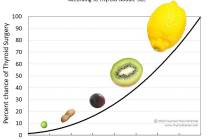Drug alternatives no safer than illegal counterparts
Psychoactive drugs have been a part of American culture for decades. Marijuana, cocaine, LSD, heroine, etc., have been experimented with medically and recreationally for years.
The side effects of these drugs have been taught in school and through drug education classes such as Drug Abuse Resistance Education since the Drug Enforcement Administration recognized the growing numbers in habitual users.
Generally, most people growing up have all been well-informed about the dangers of recreational drugs and the consequences of their use. But, what about the drugs that you don’t know about? What about the drugs that are not as mainstream, or drugs that are new to society and gaining popularity with America’s youth?
There is a current and emerging threat and danger sweeping across the country in the form of over-the-counter synthetic drugs. These drugs are marketed and sold as incense and bath salts, conversely they are anything but. These drugs, which are conveniently sold at smoke shops and markets, are available for anyone over the age of 18 to purchase.
The marketing of these drugs entice users because of the inability for the drugs to be screened or detected on random drug tests. However the dangers of these drugs are incredibly high and the backlash of side effects has been traumatic. People are using these drugs as over-the-counter alternatives to marijuana, cocaine or methamphetamines; however, the side effects and dangers in taking these drugs are anything but a sensible alternative.
These products are available to purchase at most smoke shops, or “head shops,” which typically sell cigarettes and cigars. The Food and Drug Administration, DEA and local law enforcement are on the losing end of a battle that is progressively getting worse.
Synthetic drugs, which both spice and bath salts fall under, are nothing more than man-made chemical substances sprayed or laced onto a material such as potpourri for ingestion by means of smoking or snorting.
The FDA and DEA have limited means of banning such substances, and by the time they have outlawed such substances the chemical compounds of the synthetic drug can be changed by a single molecule and reproduced and remarketed under a different name or brand.
Spice, which is branded and marketed as incense, is the over-the-counter version of marijuana. Although it is clearly labeled “not for human consumption,” it is for all intents and purposes envisioned for smoking. The synthetic drug is sold as nonaddictive substitute that offers the same psychoactive “high” that marijuana offers. However, these drugs are not monitored or regulated by any means federally.
“Interviews with patients in drug rehabilitation facilities and other past users of Spice and K2 have tragic stories about the intensity of their addiction and the emotional and thinking changes that came from their use,” www.narconon.org states.
These drugs are causing high numbers of chronic users and abusers that become emotionally and physically addicted to them. The side effects of these drugs are far worse than that of their illegal counterpart.
Common side effects include agitation, extreme paranoia leading to panic attacks and exaggerated fear, rapid heartbeat, elevated blood pressures, hallucinations, tremors and seizures. Many first-time users will attest to having one or more of these side effects and vow to never again do the drug, but find they become chronic users.
Bath salts, which are branded and marketed as salts or incense to be put in water for taking a bath, such as with Epsom salt, are actually over-the-counter methamphetamines or cocaine. The user ingests these products with the intent of getting the “upper high” that cocaine or meth would offer. These drugs are classified in the same category as spice.
The synthetic makeup of these drugs are chemical compounds sprayed on or mixed with materials safe for ingestion.
“The presumption is that most ‘bath salts’ are MDPV, or methylenedioxypyrovalerone, although newer derivatives are being made by illegal street chemists. Nobody really knows, because there has been no way to test for these substances. However, that is changing, and some tests for certain of these chemicals have been developed,” states Dr. B. Zane Horowitz, an emergency room doctor and medical director of the Oregon Poison Center.
Users of this drug have a wide range of symptoms. The desired effect of the drug is feeling very awake or alert. The negative side effects or symptoms include agitation, paranoia, increased heart rate and blood pressure, hallucinations or delusions of grandeur, depression and suicidal intentions or behaviors.
Most of these drugs are marketed toward a younger generation. With a wink and a nod at the counter, consumers and sellers are both aware of actual intent with these substances. The growing trend is among kids who are afraid to get caught by their parents or employers, and are under the impression that you can’t get caught with a simple drug test or the assumption that these drugs are somehow safer to use.
It should be known that these drugs are still illegal to use. Consuming them with the intent of getting high is still illegal.
If you suspect someone is using these drugs, offer them counseling or drug rehabilitation. The dangers of ingesting these drugs can’t be emphasized enough. The long-term effect of these drugs is still very much in the air.
The problem has only been recognized by federal agents since 2008, so much more testing and regulating has to be done.
The problems with these drugs will get far worse before they get better.
If you would like more information about these drugs or their side effects, I encourage you to do some research or contact me at the firehouse at 702-293-9228.
Brian Shea is a Boulder City paramedic/firefighter.











